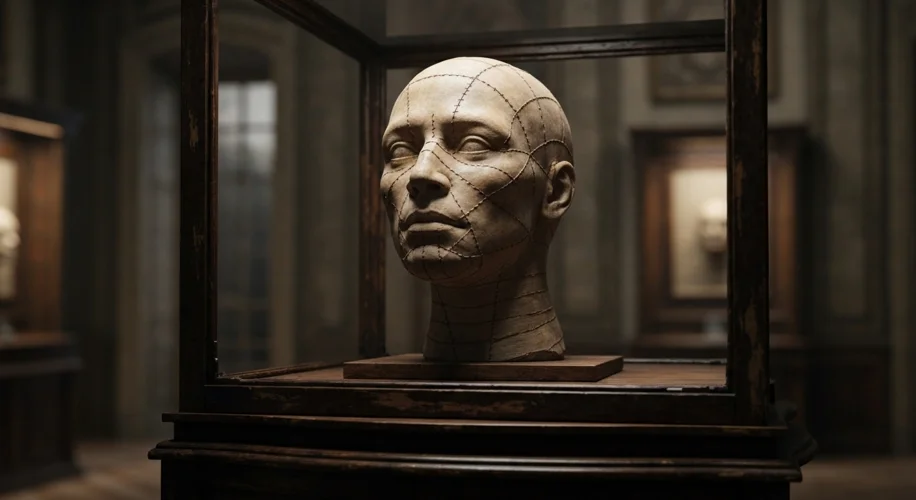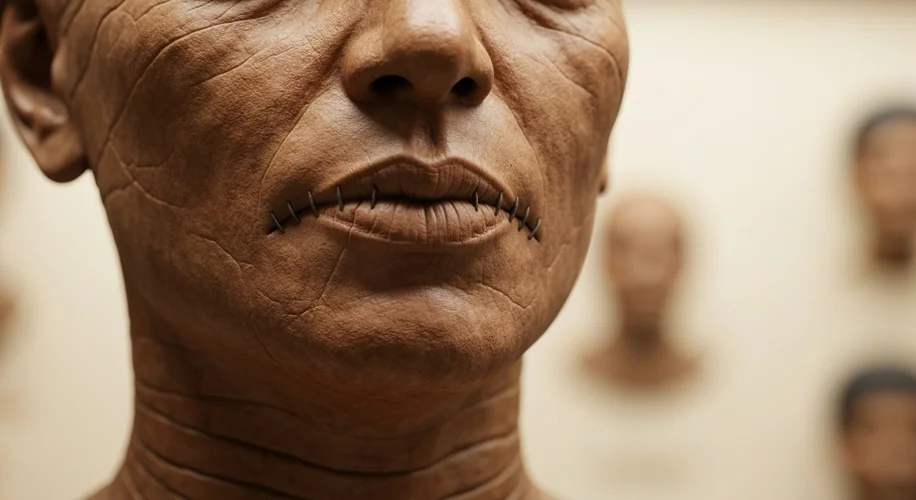In the shadowy world of antiquities, where history’s treasures can fetch fortunes, the line between genuine artifact and audacious forgery is often blurred. For decades, a peculiar mummified head, purportedly from Bolivia and dated to around 350 years old, held a place in private collections and exhibitions. It was presented as a genuine relic, a window into ancient Andean death rituals. But as the 21st century dawned, the cold, hard light of scientific scrutiny began to reveal a startling truth: this was no ancient relic, but a sophisticated deception.
The story of the Bolivian head, as it came to be known, is a compelling narrative of cultural misunderstanding, potential exploitation, and the relentless pursuit of factual accuracy through forensic science.
A Glimpse into the Unknown: Early Perceptions
For much of the 20th century, the head circulated within the exotic realms of archaeology and private collecting. Its appearance was striking: a shrunken head, or tsantsa, a practice famously associated with certain indigenous groups in the Amazon, particularly the Shuar people of Ecuador and Peru. These heads were prepared through a complex process involving the removal of the skull and the drying and shrinking of the skin, often adorned with specific rituals and beliefs surrounding the capturing of an enemy’s soul or power. The Bolivian head, however, possessed a distinctiveness that, in retrospect, should have raised eyebrows.
It was typically displayed in a glass case, its skin leathery and dark, with hair and facial features remarkably preserved. The story accompanying it was that it originated from the remote regions of Bolivia, a testament to ancient, possibly forgotten, cultural practices. Collectors and enthusiasts were fascinated by its macabre beauty and the perceived connection to a distant, mysterious past.

Cracks in the Facade: The Arrival of Forensic Science
As scientific techniques advanced, so did the ability to analyze historical artifacts with unprecedented detail. The advent of radiocarbon dating, alongside advanced imaging and DNA analysis, provided tools that could peel back layers of mystery and expose falsehoods. It was this new wave of forensic capability that ultimately turned the spotlight on the Bolivian head.
In the early 2000s, researchers and forensic scientists, driven by a desire to authenticate or debunk such artifacts, began to examine the head more closely. The first signs of suspicion arose from the head’s physical characteristics. While appearing similar to genuine tsantsa, there were subtle discrepancies. The stitching that closed the mouth, a common feature in genuine tsantsa to prevent the spirit from escaping, appeared unusually uniform and robust. The overall preservation, while impressive, seemed almost too perfect, lacking the subtle signs of age and degradation typically found in artifacts subjected to centuries of natural processes.
The Unraveling: A Combination of Clues
The true nature of the Bolivian head began to unravel through a multi-pronged scientific investigation:
- Radiocarbon Dating: Samples from the head were subjected to radiocarbon dating, a method that measures the decay of carbon-14 isotopes to determine the age of organic material. The results were a stark contradiction to the purported age. Instead of dating back several centuries, the head was found to be far more recent, likely dating to the mid-20th century or even later.
- DNA Analysis: Hair and tissue samples were analyzed for DNA. While extraction from ancient mummies can be challenging, modern techniques allowed for the possibility of identifying human DNA. Initial analyses suggested that the DNA was consistent with modern human populations, but further in-depth studies were needed to pinpoint its origin and rule out contamination.
- Forensic Examination: Detailed examination of the preparation methods revealed anomalies. The skin appeared to have been treated with chemicals rather than the traditional methods used by indigenous groups. There were also indications that the head might have been altered or modified from its original state, possibly to enhance its resemblance to a traditional tsantsa.
- Cultural Contextualization: Anthropologists and historians specializing in Andean cultures reviewed the available information. They noted that while ritualistic head preservation existed in parts of South America, the specific characteristics and the Bolivian origin, without proper documentation or community attribution, were highly unusual and lacked corroboration from known indigenous practices in that region. The practice of creating tsantsa was most prevalent in Ecuador and Peru, with less evidence of it in Bolivia.
The Verdict: A Modern Hoax
The combined evidence pointed overwhelmingly to one conclusion: the so-called 350-year-old Bolivian mummified head was not an ancient artifact but a skillfully crafted hoax, likely created in the 20th century. The exact motivations behind its creation remain somewhat speculative, but common reasons for such fabrications include financial gain through sales in the burgeoning antiquities market, or a misguided attempt to replicate or capitalize on the mystique of indigenous cultural practices.
This revelation had significant implications. It highlighted the vulnerability of the antiquities market to sophisticated forgeries and the critical role of scientific authentication. For collectors and museums, it served as a cautionary tale about the importance of provenance and rigorous scientific vetting before acquiring or displaying historical items.
Echoes and Lessons
The story of the Bolivian head is more than just an exposé of a single fake artifact. It touches upon broader themes: the commodification of culture, the ethics of collecting human remains, and the power of scientific inquiry to uncover truths that history and deception often seek to obscure. It underscores the need for respect towards the cultures and peoples whose practices are mimicked, often without their consent or understanding.
While the head itself may have been a fabrication, the process of its deconstruction offers a valuable lesson. It reminds us that history is not static; it is a constantly evolving narrative, continually re-examined and reinterpreted through new evidence and methodologies. The quest for historical truth, much like the pursuit of justice, often requires patience, critical thinking, and a willingness to challenge even the most compelling-seeming relics of the past. The Bolivian head, in its eventual unmasking, became an artifact in its own right—a testament to human ingenuity in deception, and ultimately, in revelation.

